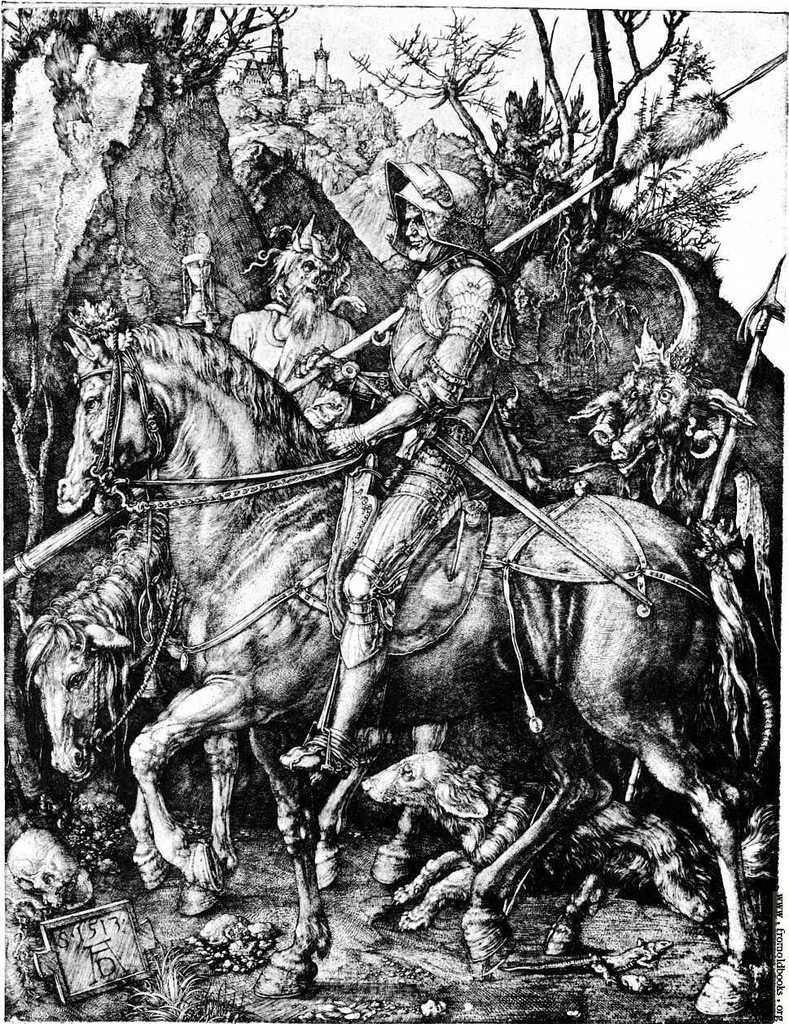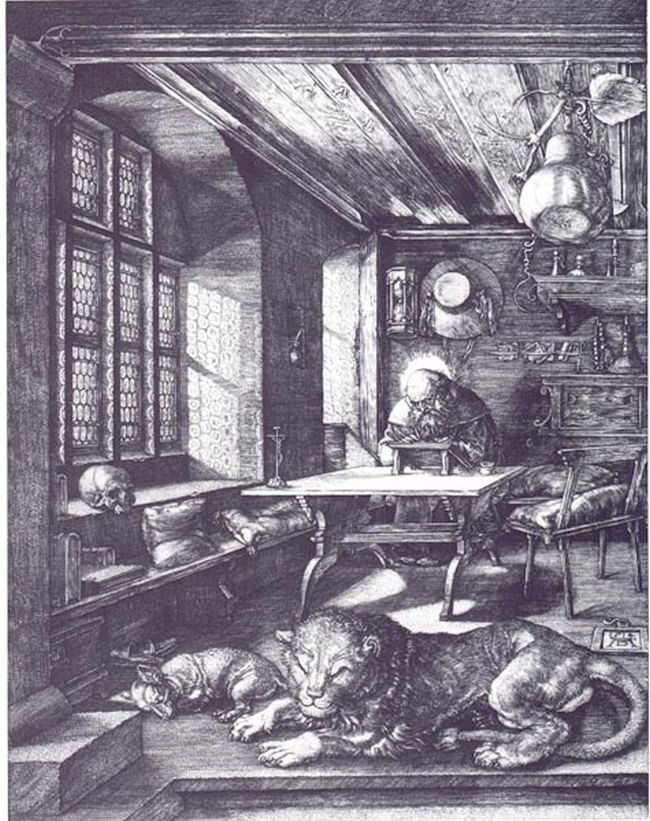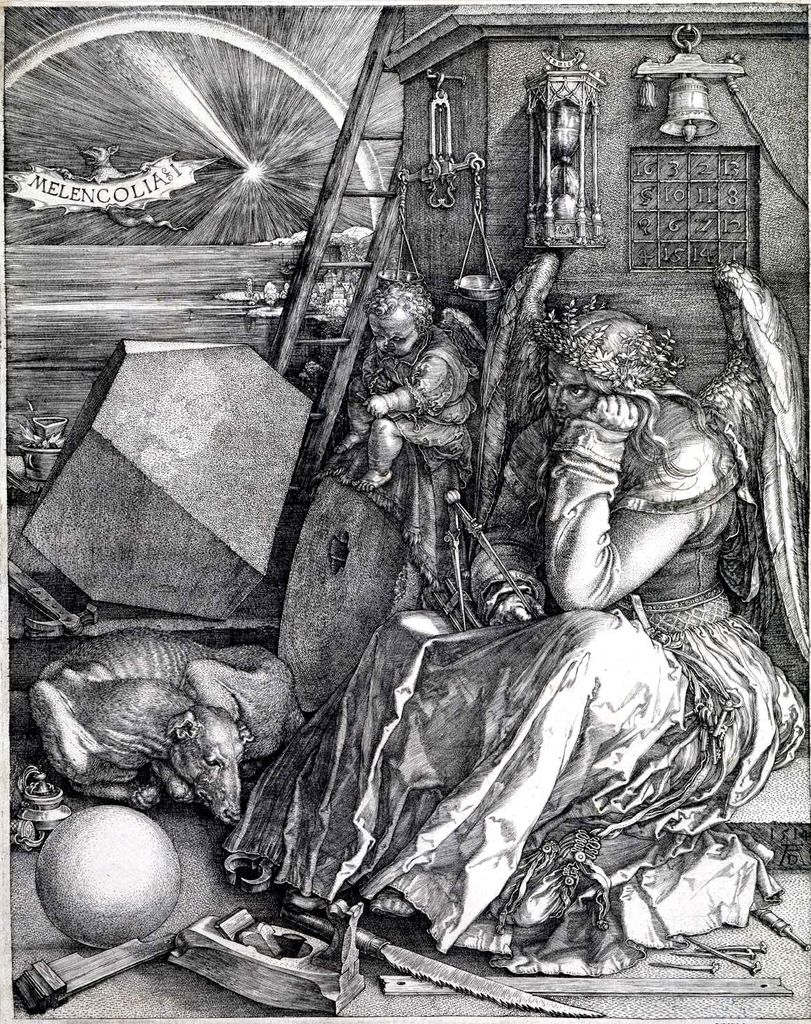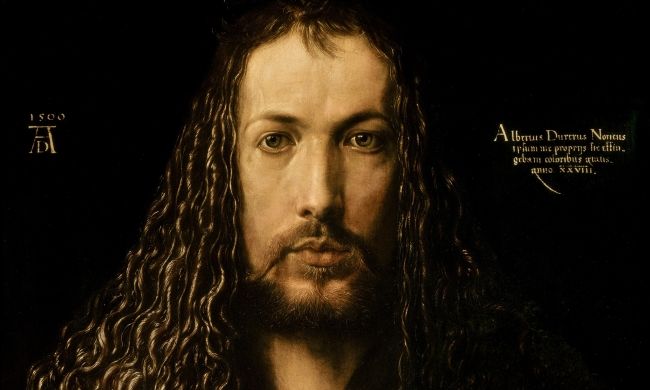
The ubiquitous symbolism in this engraving (for which Duerer used a so-called burin, a "cold chisel, to scratch a copper plate and thus making a printing plate) has been the subject of many discussions. It seems to be clear however that the theme is an allusion to the well-known Psalm 23 verse: "Even though I walk through the darkest valley, I will fear no evil, for you are with me;" And the Knight might indeed be leading his horse through a valley, given the elevated position of the castle above. Notice also Duerer's initials and the date on the plaque in the left corner below.

... which is a rather loose translation from the original Der heilige Hieronymus im Gehäus. Saint Jerome is seated at his desk engrossed in intellectual labor. Perhaps he is shown translating the Bible into Latin (the Vulgate)? Of note are also the dog, an animal often found in Duerer's work, to symbolize loyalty; and the lion is of course the animal from the famous Biblical tale.

This work too bursts with symbolism. It is first and foremost a homage to knowledge and mathematics, and geometry. Notice the truncated rhombohedron, a geometrical body known as Duerer's solid. The dog is again present, though it is not clear why it is so emaciated. The hourglass is a reminder that time is running out, and a further memento mori is the barely visible human skull in the rhombohedron. The melancholy reflections are probably inspired by the death of Duerer's mother, Barbara Holper, in the same year as he made Melencolia (1514).
But, what is most striking is the Magical Square:
.jpg)
Whether you add up the numbers along the rows, or the columns, or the diagonals, the result is always 34. Not only that, but if you add up the four corner squares, or the four quadrants, or even the center four squares, you also arrive at 34! Further proof of Duerer's sheer genius is offered by the fact that this arrangement even allows for integrating the date of the work in the center two squares of the bottom row (15 and 14)... and because the 4 to the left below corresponds with the fourth letter of the alphabet, "D", while the "1" to the right below stands of course for an "A"! The man was even able to sneak his initials in!

Albrecht Duerer. Will we be able to protect his immense and invaluable heritage?
MFBB.
No comments:
Post a Comment